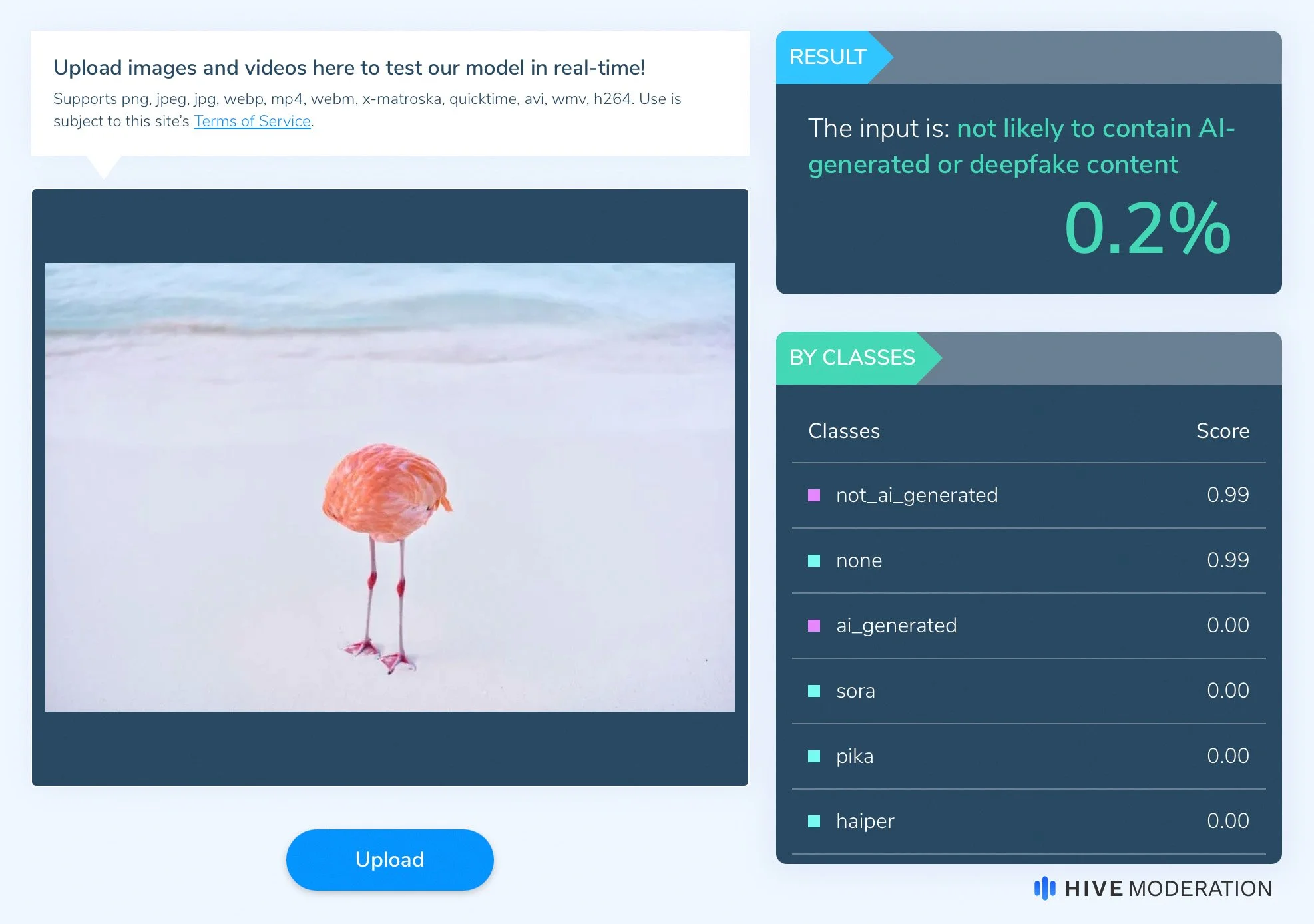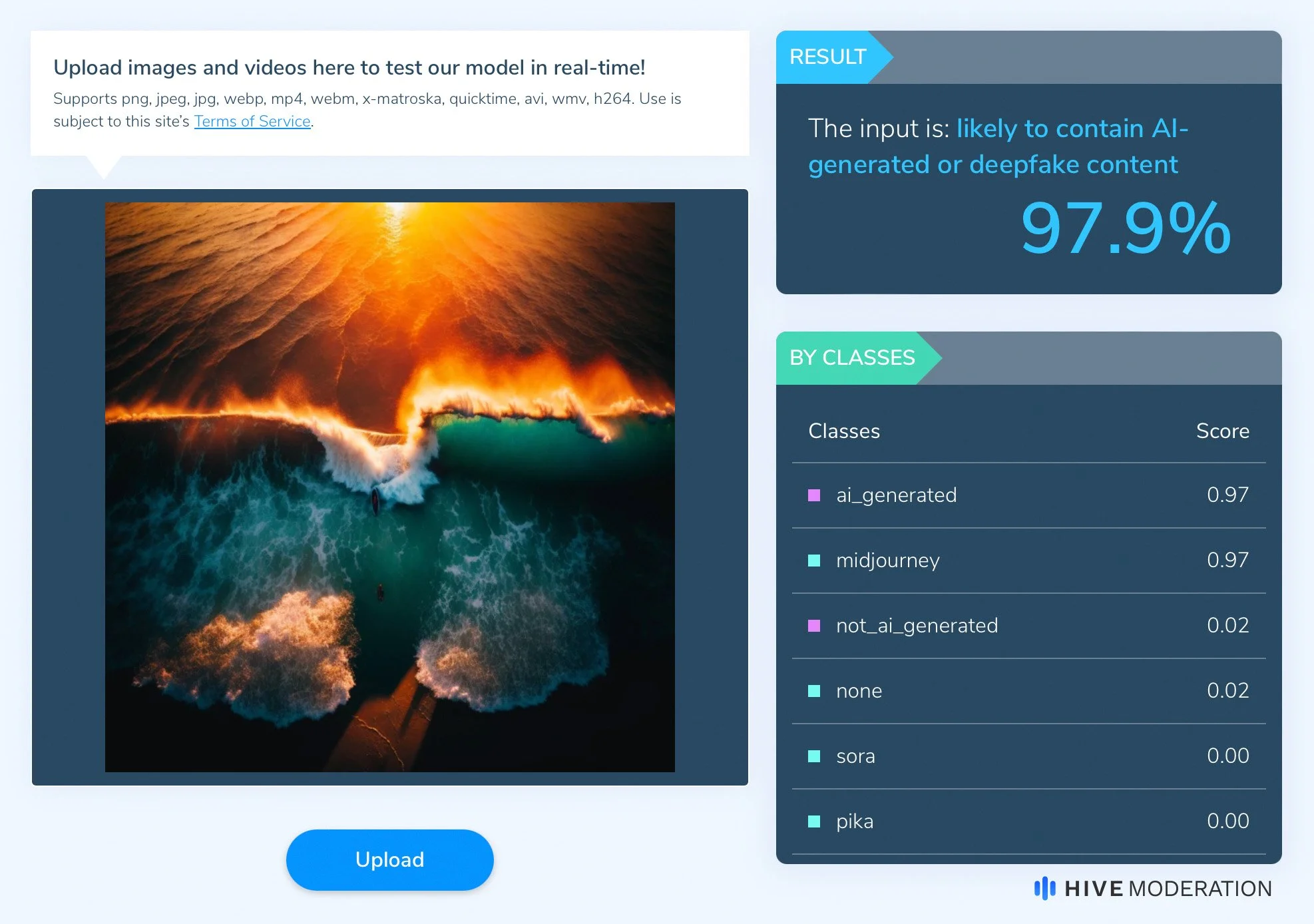Are Pictures Really Telling the Truth? A Further Test of the Hive AI Detection Tool
Image Credit: Annika Nordenskiöld. A winning AI entry in Ballart international Foto Bienalle - International AI Prize.
We conducted a test on the Hive Moderation AI-Generated Content Detection tool. This experiment was designed to evaluate the tool's efficacy by using photos from various contests, including those disqualified for being misidentified as AI-generated or real.
The Experiment Setup
We selected a diverse set of photographs for this test, including famous images disqualified from photo contests for allegedly being AI-generated, as well as winning entries from AI contests erroneously disqualified for supposed human creation. This range provided a robust basis for assessing the detection accuracy of the Hive tool.
Image Credit: Carolyn McKay. A winning AI entry in Ballart international Foto Bienalle - International AI Prize.
Mixed Outcomes
The results revealed a complex picture. The Hive tool accurately identified two AI-generated photos from AI contests as being AI-created. However, it incorrectly labeled an AI-generated photo that had entered a traditional photo contest as human-made, highlighting potential flaws in the detection process.
Image Credit: Suzi Dougherty. A disqualified AI entry in Charing Cross Photo Contest (Fashion).
Correct Identifications
On a positive note, the tool successfully recognized a real photo entered in an AI contest as human-generated and correctly identified two AI photos entered in a real photo contest as AI-generated. It also accurately detected an AI painting entered in a painting contest as AI-created, showing its capability in diverse formats.
Image Credit: Miles Astray. A disqualified real photo in 1839 Photography Awards (AI category).
Implications for Photo Contests
These findings raise important questions about the reliability of using AI detection tools in photo contests. The risk of unfair disqualification due to inaccurate AI detection could alter the competitive landscape, potentially discouraging artists from participating or affecting the integrity of the contests.
Image Credit: Absolutely AI. A disqualified AI entry in DigiDirect's monthly photo competition.
Ethical and Fairness Considerations
The misclassification of artistic works by AI tools not only questions the fairness of competitions but also impacts the credibility and career trajectories of artists. It is crucial for contest organizers and the artistic community to consider the limitations of current AI detection technologies and seek more robust verification methods.
Image Credit: Jason Allen. A disqualified AI entry in the digital category at the Colorado State Fair.
The Need for Improved Technologies
This experiment underscores the urgent need for advancements in AI detection technologies. As AI-generated art becomes more sophisticated, the tools used to detect them must evolve correspondingly to ensure they can accurately differentiate between AI and human creations.
Image Credit: Boris Eldagsen. A disqualified AI entry in Sony World Photography Awards.
Rethinking Art Competitions in the Age of AI
Should art competitions distinguish between AI-generated and non-AI art if the ultimate value lies in the art itself, rather than the tools used to create it? Our findings reveal that while AI detection tools are advancing, they are not infallible. This imperfection leads to misclassifications that could unfairly impact participants and the integrity of competitions.
The essence of art has always been its ability to evoke emotion, provoke thought, and express a multitude of perspectives. By focusing competitions on the medium—AI or human—rather than the artistic value, we risk diminishing the profound universal qualities that art brings to society. Moreover, as the lines between human and machine creativity continue to blur, it becomes increasingly challenging to define what constitutes 'authentic' art.







